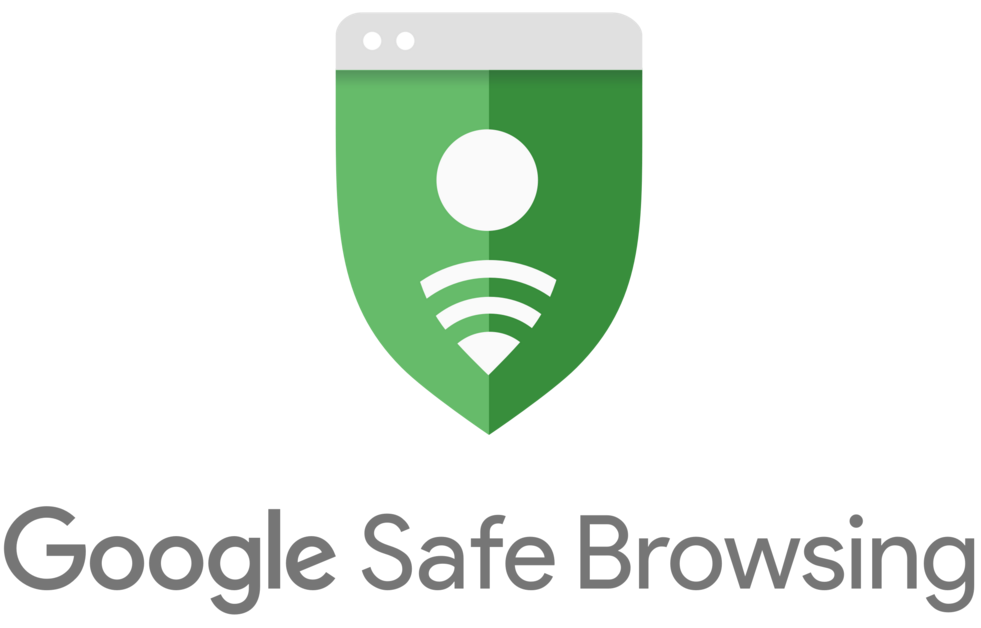9 Essential Money Moves to Transform Your Finances in 2025: A Complete Guide

Anúncios
Foundation: Debt Management and Living Below Your Means
Eliminating High-Interest Debt
Facing high-interest debt is like trying to fill a bucket with a hole in it.
The first step in transforming your finances is to tackle this kind of debt head-on.
Anúncios
Prioritize paying off any loans or credit cards with high-interest rates.
Here’s a strategy: focus on paying off the smallest debt first and then roll those payments into the next one.
Anúncios
This is known as the snowball method and can be very motivating as you see debts disappearing one by one.
Alternatively, the avalanche method directs you to pay off debts with the highest interest rates first, saving you more on interest in the long run.
Whichever approach you choose, the goal is clear: free yourself from the burden of high-interest debt as quickly as possible.
Maintaining a Positive Income-Expense Gap
Living below your means is essential for financial health.
This means consistently spending less than you earn.
The larger the gap between your income and expenses, the more funds you have to allocate towards savings, investments, or other financial goals.
Regularly track your spending to ensure you’re not slipping into the habit of living paycheck-to-paycheck.
To maintain this positive gap, review your budget monthly.
Look for areas where you can cut back expenses without sacrificing your quality of life.
Automating savings and investments can also help in ensuring you live within your means without the temptation to overspend.
Reducing Unnecessary Spending
Finding ways to cut down on unnecessary spending can significantly improve your financial situation.
By adopting these strategies, you can start reducing the financial leakage that impacts your overall financial health.
As you move forward, remember that small adjustments can lead to significant changes in your financial landscape.
| Tip | Action |
|---|---|
| Create a Budget | Define your needs versus wants and minimize or eliminate items that don’t bring long-term value. |
| Meal Plan | Plan meals and cook at home to avoid the high costs of eating out frequently. |
| Avoid Impulse Purchases | Give yourself a cooling-off period before making unplanned purchases. If you still want it after a few days, consider it. |
| Use Discounts and Coupons | Look for discounts and use online coupons to make the most of sales and offers. |
Building Financial Security: Emergency Fund Essentials
Establishing a Fund to Cover 3+ Months of Essential Expenses
Creating an emergency fund is a foundational step toward financial stability.
Aim to set aside enough to cover at least three months’ worth of essential, non-negotiable expenses.
These often include:
- 💵 Housing: Rent or mortgage payments.
- 💵 Utilities: Electricity, water, and internet.
- 💵 Transportation: Car payments, gas, or public transit costs.
- 💵 Food: Grocery bills.
- 💵 Healthcare: Insurance premiums and medical expenses.
Even if you don’t anticipate a job loss or unexpected expense, life can be unpredictable.
Having this cushion allows you to handle unforeseen situations without dipping into long-term savings or accruing high-interest debt.
 Be prepared for any adversity
Be prepared for any adversity
Identifying Which Expenses Are Non-Negotiable
Determining which expenses are non-negotiable can help you better estimate the size of your emergency fund.
Start by reviewing your monthly budget and separating essential costs from discretionary spending.
Essential costs typically include:
- 💵 Rent or mortgage
- 💵 Utility bills
- 💵 Groceries
- 💵 Transportation
- 💵 Healthcare costs
This exercise not only helps in building a robust emergency fund but also provides clarity on your financial priorities.
Strategies for Building and Maintaining Emergency Savings
Building an emergency fund requires consistent effort and strategic planning.
Here are some effective strategies to help you get started and maintain your savings:
- Automate Your Savings: Set up automatic transfers from your checking to your savings account to make saving a seamless and regular process.
- Cut Unnecessary Expenses: Distinguish between needs and wants to eliminate non-essential expenditures. This could include dining out less often, reducing subscription services, or finding cost-effective alternatives.
- Direct Windfalls into Savings: Any unexpected income, such as tax refunds or bonuses, can significantly boost your emergency fund if allocated wisely.
- Earn Additional Income: Consider side gigs or freelance work to supplement your main income. The extra money can be directed straight into your emergency savings.
Regular reviews of your budget can reveal areas to cut back and improve your savings rate.
As your expenses evolve, adjust the amount you save to ensure your fund remains adequate.
By taking these steps, you create a robust safety net that prepares you for financial surprises without compromising your long-term goals.
Next, we’ll dive into managing your investment portfolio to ensure it’s aligned with your financial objectives and risk tolerance.
Investment Portfolio Management
Understanding Portfolio Rebalancing and Its Importance
Rebalancing your investment portfolio is crucial for maintaining the right level of risk in your investments.
Over time, the market will cause different assets to grow at different rates.
For example, let’s say you aim for a portfolio consisting of 70% stocks and 30% bonds.
After a period of high stock market performance, your portfolio might shift to 80% stocks and 20% bonds.
This altered allocation can expose you to more risk than you initially planned.
Rebalancing involves selling some of your investments that have outperformed and buying more of the investments that have underperformed.
This helps you stay aligned with your financial goals and risk tolerance.
The Motley Fool emphasizes the importance of regular rebalancing to avoid concentration in any single asset class.
Maintaining Desired Stock-to-Bond Ratios
Having a well-balanced mix of stocks and bonds is essential for long-term investment success.
Stocks generally offer higher potential returns but come with increased risk. Bonds, on the other hand, provide stability and income.
The right mix depends on your age, risk tolerance, and financial goals.
For younger investors with a higher risk tolerance, a stock-heavy portfolio makes sense.
As you approach retirement, gradually increasing your bond allocation can help preserve capital and reduce volatility.
Remember, your specific ratio should reflect your individual circumstances.
Long-term Investment Strategies and When to Adjust Them
A successful long-term investment strategy involves staying the course and not making impulsive decisions based on market fluctuations.
Legendary investor Warren Buffett advises that the best holding period is “forever” when investing in solid companies.
This approach promotes discipline and helps you take advantage of compound growth.
However, there are times when adjustments are warranted:
- 💵 Life Events: Significant changes such as marriage, the birth of a child, or nearing retirement might necessitate revisiting your investment strategy.
- 💵 Market Conditions: While you shouldn’t react to every market hiccup, prolonged market trends could justify a reassessment.
- 💵 Financial Goals: As your goals evolve, your investment strategy might need to change. For example, shifting from aggressive growth to income generation as you near retirement.
By consistently reviewing and, if necessary, adjusting your portfolio in alignment with these factors, you can stay on track to achieve your long-term financial objectives.
Effective portfolio management is a dynamic process that requires periodic reviews and adjustments to ensure your investments align with your goals and risk tolerance.
Mastering these principles will set a strong foundation for your financial future.
Maximizing Retirement Accounts
2025 Contribution Limits
Planning ahead is essential for maximizing retirement accounts.
For 2025, the IRA contribution limit is $7,000, or $8,000 if you’re 50 or older, allowing you to split the contribution across multiple IRAs but with a combined total not exceeding the limit.
For 401(k) accounts, the contribution limit is set at $23,500, with an additional $7,500 catch-up contribution for those aged 50 and above.
Traditional vs. Roth Accounts
Choosing between a Traditional and a Roth account can significantly impact your tax situation.
A Traditional account offers pre-tax contributions, reducing your taxable income for the year in which the contributions are made.
When you withdraw the funds in retirement, they will be taxed at your then-current tax rate.
A Roth account works differently: contributions are made with post-tax dollars.
This means you do not get a tax deduction when contributing, but qualified withdrawals in retirement are tax-free.
Imagine the benefit of withdrawing from an account worth $400,000 completely tax-free—it can be a substantial advantage.
Catch-Up Contributions for Those 50+
If you’re 50 or older, you get to make catch-up contributions to both IRAs and 401(k)s.
This is a golden opportunity to boost your retirement savings as you approach retirement.
For IRAs, you’re allowed to contribute an extra $1,000, making the total contribution limit $8,000.
For 401(k)s, you can contribute an additional $7,500, bringing the total to $31,000 per year.
These catch-up contributions can significantly enhance your retirement savings, especially if you started saving late.
It’s important to utilize these opportunities to ensure a more comfortable and secure retirement.
By strategically choosing between account types and maximizing contribution limits, you can effectively build a robust retirement portfolio.
Embrace these opportunities to maximize your savings, ensuring a financially stable future.
Remember, maximizing your retirement accounts is a key aspect of your overall financial strategy.
As you continue to build your financial foundation, keep taxes, contributions, and future needs in mind.
This all sets the stage for the next fundamental topic of financial planning.
Healthcare Financial Planning
Understanding HSAs and Their Triple Tax Advantage
Health Savings Accounts (HSAs) offer a unique blend of savings and tax advantages, making them an essential tool in your financial planning toolkit if you qualify.
Here’s why they’re so valuable:
- Pre-Tax Contributions: You can contribute to an HSA on a pre-tax basis, which reduces your taxable income for the year.
- Tax-Free Growth: Any earnings or interest accrued within your HSA are not taxed.
- Tax-Free Withdrawals: Withdrawals used for qualified medical expenses are completely tax-free.
To make the most of your HSA, ensure you’re aware of what constitutes a qualified expense, such as doctor visits, prescriptions, and even some over-the-counter medications.
Unused funds roll over each year, allowing your balance to grow over time.
FSA Options and Their Use-It-or-Lose-It Nature
Flexible Spending Accounts (FSAs) are another option for managing healthcare costs, although they come with different rules and benefits:
- 💵 Pre-Tax Contributions: Similar to HSAs, you can make pre-tax contributions, lowering your taxable income.
- 💵 Qualified Expenses: FSAs cover a wide range of healthcare expenses. These may include medical devices, dependent care, and more.
However, FSAs have a “use-it-or-lose-it” rule: any funds not used by the end of the plan year are forfeited.
Some employers offer a grace period or allow a portion of funds to carry over, so check your plan details to avoid losing your savings.
Maximizing Healthcare Savings Through Tax-Advantaged Accounts
Combining different accounts can maximize your healthcare savings:
- 💵 HSA Contributions: Max out your HSA contributions for comprehensive savings benefits.
- 💵 FSA Use: Allocate enough in your FSA to cover predictable expenses to ensure you don’t leave any money on the table.
By strategically using HSAs and FSAs, you can efficiently manage current healthcare costs and save for future expenses, giving you peace of mind and financial security.
As we dive deeper into managing your overall finances, let’s turn to how thoughtful estate planning and beneficiary management can secure your wealth for future generations.
Estate Planning and Beneficiary Management
Essential Estate Planning Documents to Prepare
Estate planning is a crucial step in securing your financial future and ensuring your assets are managed and distributed according to your wishes.
Essential documents to consider preparing include:
- 💵 Will: This document outlines how you want your assets distributed after your death.
- 💵 Durable Power of Attorney: Appoints someone to manage your affairs if you become incapacitated.
- 💵 Healthcare Power of Attorney: Designates someone to make medical decisions on your behalf.
- 💵 Living Will or Advance Directive: Specifies your preferences for medical treatment if you cannot communicate.
- 💵 Guardianship Designations: Important if you have minor children, ensuring they are cared for by someone you trust.
These documents are the foundation of a robust estate plan.
Importance of Regular Beneficiary Updates
Regularly updating your beneficiary designations is critical. Life changes such as marriage, divorce, or the birth of a child can impact whom you want to receive your assets.
Outdated information may lead to complications and unintended consequences.
Make it a habit to review and, if necessary, update your beneficiaries on all accounts periodically.
Key Considerations for Different Life Stages and Circumstances
Your estate planning needs evolve with your life stages. Here are some key considerations:
- 💵 Young Adults: Even if you have few assets, having a will and medical directives is essential.
- 💵 Parents with Young Children: Ensure guardianship designations are clear and updated.
- 💵 Midlife: Reevaluate your estate plan if you experience major life events.
- 💵 Retirement: Review your plan regularly to adjust for changing circumstances and ensure tax efficiencies.
These considerations help keep your estate plan relevant and effective at all stages of your life.
By focusing on these estate planning essentials, you can ensure your financial legacy is preserved and your loved ones are provided for.
Making Finance Fun: Gamification Strategies
Managing finances doesn’t have to be a mundane task; it can be both fun and rewarding if you turn it into a game.
Leveraging gamification strategies can make the process engaging and help you stay committed to your financial goals.
Here’s how you can gamify your finances:
Creative Ways to Turn Saving Money into a Challenge
To make saving more exciting, consider setting small weekly challenges.
For example, challenge yourself to spend less on groceries each week than the previous one.
This may not be sustainable forever, but it can lead to noticeable savings over a few months.
Another idea is to take on a “pantry challenge.” See how long you can manage without groceries by utilizing what you already have at home.
It’s a creative way to save money and reduce waste.
Competitive Approaches to Debt Reduction and Savings
Healthy competition can be a strong motivator.
Try these competitive approaches:
- 💵 Debt Reduction Race: Compete with friends or family to see who can pay off the most debt in a predefined period.
- 💵 Savings Contest: Set a savings target and race to see who reaches it first. For added motivation, agree on a small reward for the winner.
- 💵 Credit Score Battle: Track your credit scores and compete to see who can improve theirs the most. This will encourage good financial habits and responsible credit usage.
Tracking and Improving Credit Scores as a Game
Monitoring your credit score can be more enjoyable if you treat it like a game.
Many financial apps offer features to track and boost your credit score.
Compete with a friend or loved one to see who can achieve the largest increase in their score within six months.
Celebrate milestones and understand what actions lead to improvements and setbacks.
Gamifying your financial journey can transform tedious tasks into rewarding endeavors.
Up next, we’ll delve into crucial aspects of estate planning and managing your beneficiaries to ensure your legacy is well protected.







